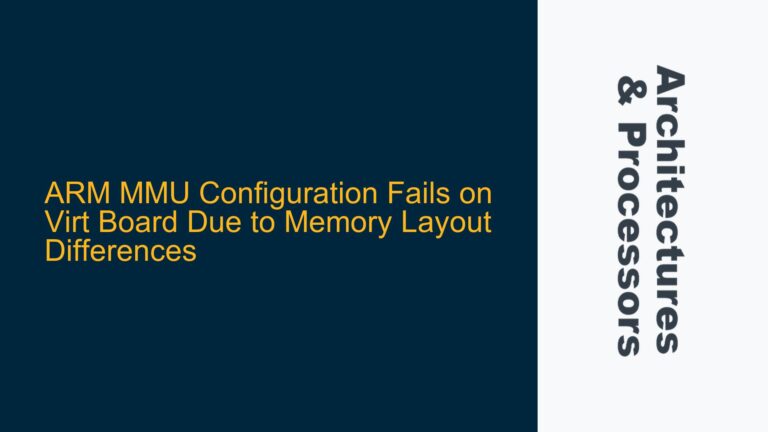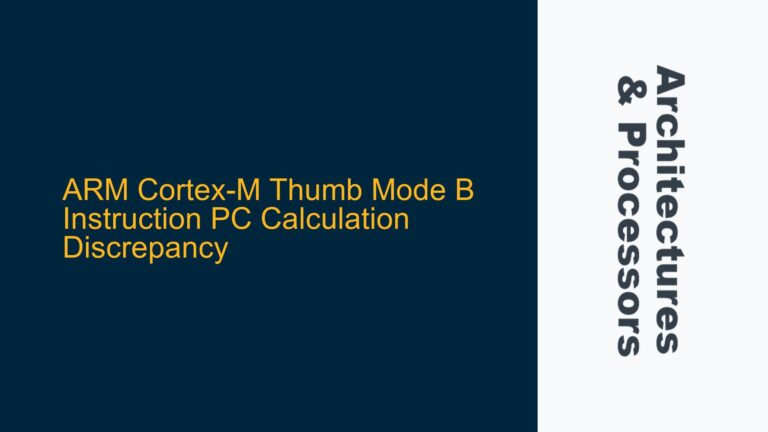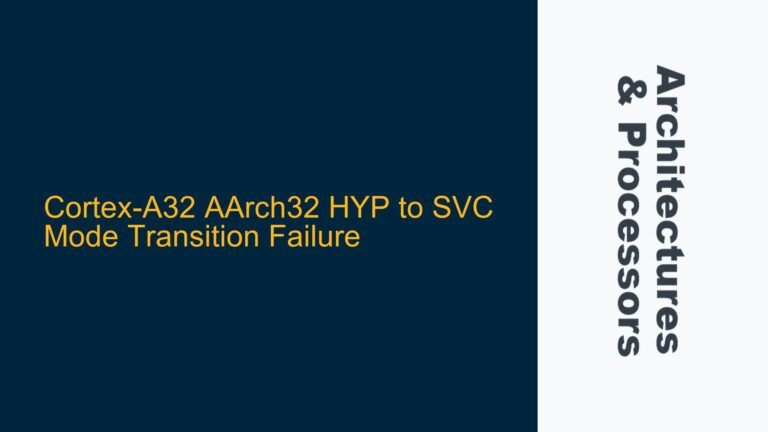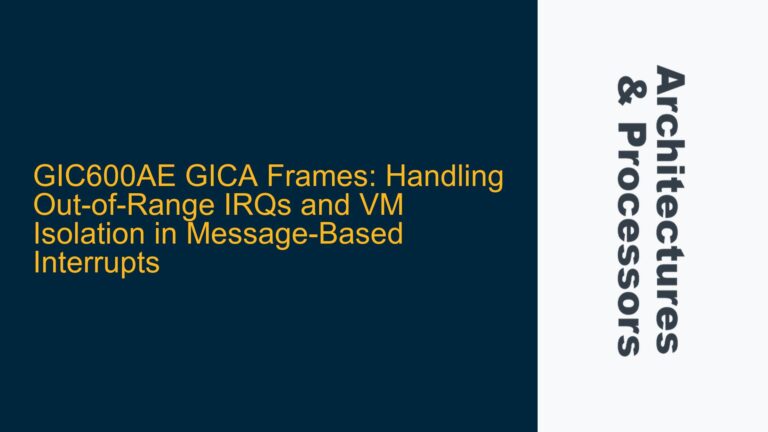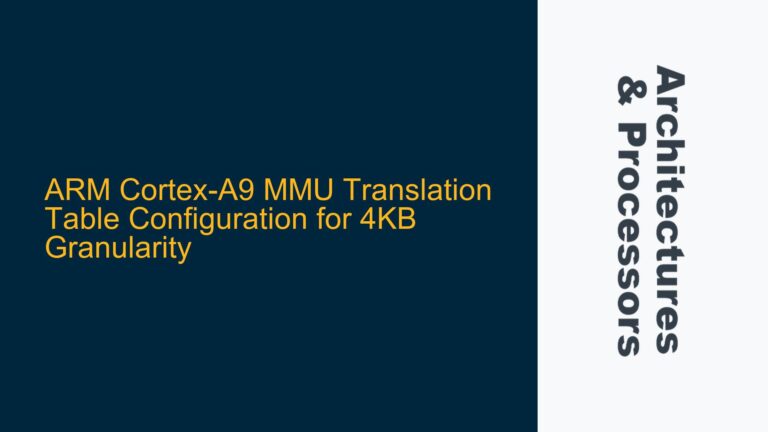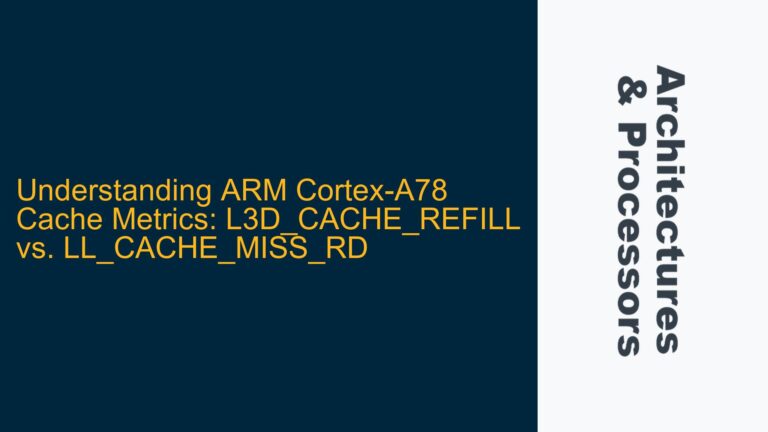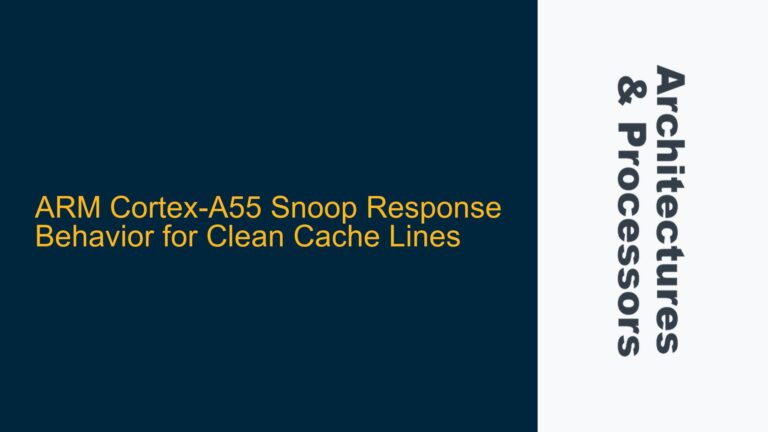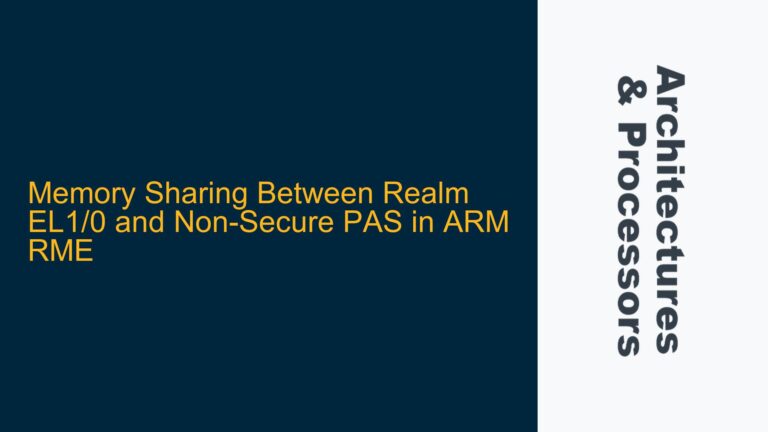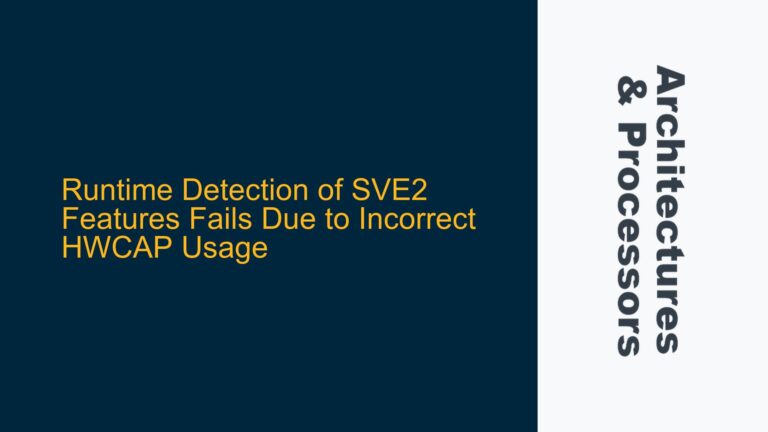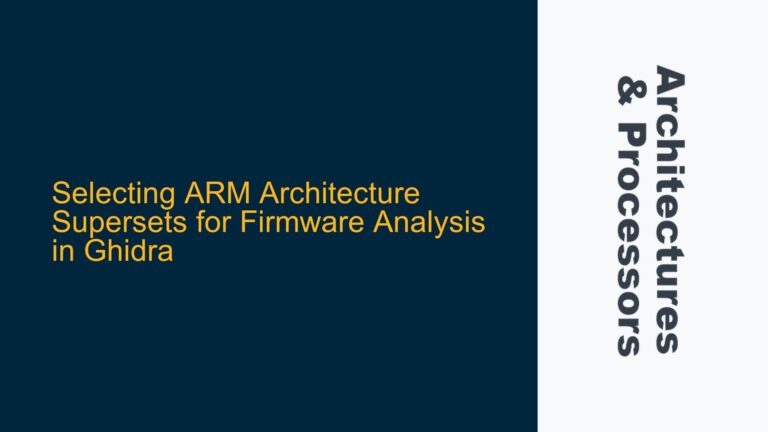ARM MMU Configuration Fails on Virt Board Due to Memory Layout Differences
ARM Cortex-A53 MMU Translation Fault on Virt Board During Bootloader Execution The core issue revolves around a Memory Management Unit (MMU) configuration that works flawlessly on a Raspberry Pi 3B (Cortex-A53) but fails on a QEMU virt board (also Cortex-A53) with an "Instruction Abort" exception. The fault occurs immediately after enabling the MMU, specifically during…
